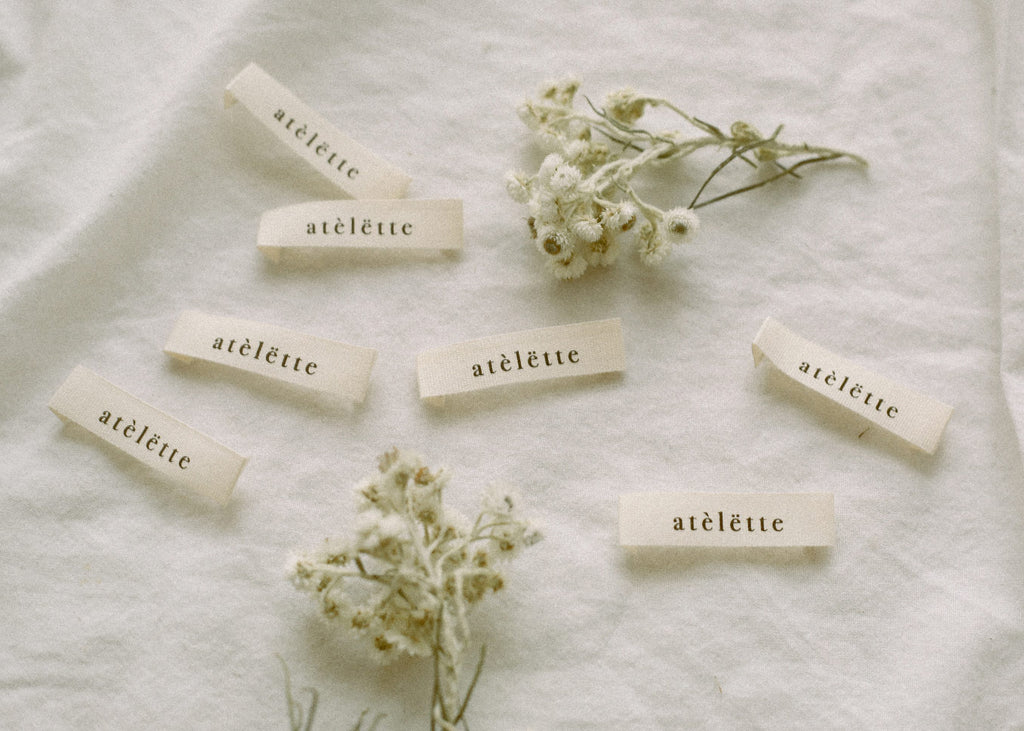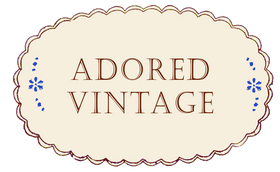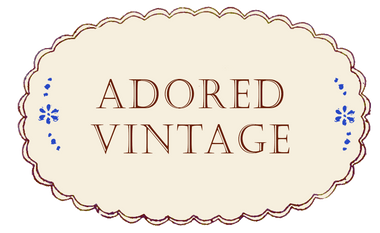Q&A With Atelette, Our Label
Publié par RODELLEE BAS le

The Past Revisited
I have always been drawn to things of old. Having sold antique and vintage clothing for over a decade (and a collector for longer) my heart has always had a soft spot for feminine lines, a certain color palette, and my eyes drawn to specific prints and patterns. I wanted to design garments that pulled bits and pieces from all the different eras of fashion I adore, particularly the Victorian and Edwardian era, the 1930s to the early 1940s, and the 1970s.

My inspirations came mostly from found vintage photographs, antique catalogs, my own collection of vintage and antique clothing, paintings, and my own imaginings of what my favorite fictional characters might wear. All the colors for fabrics and knits were inspired by my love for dried flowers and landscape paintings particularly those of Camille Corot.
The Bennet Dress is an amalgamation of what I imagine (and hope) both Jane and Elizabeth Bennet (from Jane Austen's Pride and Prejudice) would wear. I feel a kinship to both women and their sensibilities, and I wanted to design a dress that I imagine they would share.
The Aveyron Dress was inspired by my time in the Aveyron region in France back in 2016 and part of my heart is still there roaming the fields and fields of Queen Anne's lace in the Midi Pyrenees.
The Arduous Search for the Maker
I spent a little over a year in search of manufacturers for my label. I had wavered strongly between having my garments produced domestically or overseas as each decision had their own positives and negatives. It was a very, very time intensive process which is why it took me so long to find a manufacturer!
After weighing out the pros and cons of each decision, I decided to have Atelette produced overseas after finding a manufacturing company in Guangzhou that was able to do very small production runs and also included services to help me navigate the process and journey of creating my first label as I did not go to school for design. Another factor in my decision to go with my manufacturing company is that it is also family operated and small and they have an office in the West Coast that was available for me to reach out to whenever I had questions (which was often). Due to Covid, all the work for Atelette was done remotely which had so many challenges in and of itself as you can imagine!
While I will not be marketing Atelette as Sustainable/Ethical/Slow Fashion (individuals will have their own personal definition of what qualifies as being one or the other or all three), in many ways Atelette does cross the lines of Sustainable, Ethical, and Slow Fashion, but more on this on a later post.
3 Lessons on Manufacturing
I have learned SO MUCH during this process and I wanted to share some of this new found knowledge with all of you so you have a better understanding of how garments can go from concept to design.
Lesson One: Just because you have an idea does not mean it can be made. Well, technically it CAN, but do you have the time and money to get it produced by the right factory who has the right tools and equipment?
Lesson Two: Different fabric/textile/clothing factories produce different things and offer a myriad of services. It took me so long to find my manufacturer because I needed them to be able to do A LOT of things to help me on the pre-production side. The "downside" is my manufacturer is not equipped to create other types of garments (like coats or any thick materials, anything denim, intimates, swimwear etc) so if I ever wanted to expand Atelette, I will have to find other manufacturers. (P.S. - A company like Everlane works with over 30 different manufacturers)
Lesson Three: Speaking of factory limitations, the smaller the factory, the less it can produce. This applies to actual output meaning how many actual pieces of a single dress do you get produced? For big brands like Urban Outfitters for example, they're producing 500-1,000 of the same piece. For Atelette, I'm producing dozens. Vast difference. Another limitation with my manufacturer because they are smaller is the inability to do plus sizing or petite sizing. They do not have the machinery or equipment to do so, similarly to not having equipment and machinery to work with denim or intimates and swimwear. So, at this moment in time, in the very early stages of Atelette, our garment will not have any plus or petites.
Limited Release & Attainable Pricing
In the process of narrowing down my search from hundreds of manufacturers to dozens, then finally to three, then one, I have learned so much about all the costs that goes into producing your own garments. And there are A LOT of costs involved. From tech packs, to getting patterns graded for sizing, to physical samples being sewn, then those samples being revised and sewn again (and again!) and all this being done remotely through Zoom or Facetime. It has been an absolute labor of love and a slow process.
Another reason I went with a manufacturer overseas is during my search for a domestic producer, the cost of Atelette for the quality I wanted with all the details I wanted was getting more and more expensive. When I brought my designs for the Aveyron Dress to a US manufacturer based in LA and told them I wanted it fully lined, seams finished, hidden pockets, all cotton... I was quoted the dress would need to retail around $325 for me to able to make some kind of profit.
It didn't feel right to me to have been selling dresses for $68-$85 on Adored Vintage and then all of a sudden sell $250-$400 dresses for Atelette. I did not feel good about this at all.
While Atelette will be higher priced than our other garments (that we don't design/produce) because the quality is higher, the price point is still very attainable (for instance the Aveyron Dress, which is our most expensive dress to produce, will retail around $125). For a personal reason, I wanted to keep the prices for Atelette affordable and attainable. Affordability is very subjective as what is affordable to some, is definitely not for others.
A guiding light for me with pricing was the discovery that my sister's future sister-in-law, a young college educated Filipina, finds that Adored Vintage/Atelette is attainable for her. The fact that Adored Vintage/Atelette isn't a pipe dream, that she could buy these clothes by saving up her money...Do you know how much this news made my heart sing? The fact that a young woman in the Philippines, my home country, could realistically AFFORD garments from my shop. It means the absolute world. I do not really know how to describe the feeling other than it felt so affirming and my heart truly was overcome with gladness.
While some would balk and instantly dismiss garments being Made in China, it is important to remember not all things Made in China are equal. With time, diligent research, care and thoughtfulness for the process, passion for your ideas, a steadfast commitment to your dreams, and asking SO MANY questions (what are the factory standards, what are the working conditions, how much does the average worker make?) it is 100% possible to have beautifully crafted garments made in China (or Vietnam, India, the Philippines...) that you can then price attainably and feel really good about in your heart and spirits.
I hope you are all just as excited as I am for the release of our first two dresses, The Aveyron and the Bennet. So much love and attention went into the journey to create them. I still pinch myself about it! I can't believe they'll be here so soon! Pre-Orders open on 2/22/22!!!
TAGS










